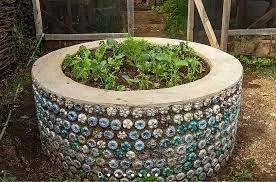Eco-Bricks: Transforming Waste into Sustainable Matter
Plastic pollution is a global environmental crisis that poses significant threats to our ecosystems and human health. One creative and effective way to combat plastic waste is through eco-bricks. These eco-friendly building blocks are made by compacting and sealing plastic waste into bottles, creating a dense and durable material that can be used for various construction projects.
What are Eco-Bricks?
Eco-bricks, also known as bottle bricks, are plastic bottles stuffed with non-recyclable plastic waste like bags, wrappers, and other single-use plastics. The bottles are tightly packed until they become dense and solid, creating a building block that can replace traditional construction materials like bricks or cinder blocks.
The Environmental Benefits of Eco-Bricks
Diverting Plastic Waste: Eco-bricks provide an innovative solution for managing plastic waste that would otherwise end up in landfills or polluting our oceans and natural landscapes. We all remember the “Save the Turtles” message, well here’s another way besides stopping the use of plastic straws.
Reducing Carbon Emissions: By substituting traditional building materials with eco-bricks, we can lessen the demand for resource-intensive materials like concrete and reduce carbon emissions associated with their production.
Encouraging Recycling: Eco-bricks motivate communities to recycle plastic waste and educate people about the importance of responsible waste management.
Circle Eco-Brick from Ecobricks.org
Low-Cost Construction: Eco-bricks can be used to build low-cost structures, especially in developing regions, providing affordable housing solutions.
How to Make Eco-Bricks?
Collecting Plastic Waste: Gather non-recyclable plastic waste, such as plastic bags, food wrappers, styrofoam, and other soft plastics. Ensure the plastics are clean and dry to prevent unpleasant odors and microbial growth.
Selecting the Right Bottles: Choose transparent plastic bottles with screw-on lids, like soda or water bottles, to create eco-bricks. Clear bottles allow you to see the density and quality of the packed plastic inside.
Preparing the Eco-Brick:
a. Cut or shred the plastic waste into small pieces to maximize packing density.
b. Fill the bottle with the shredded plastic waste, compressing it using a stick or rod to eliminate air gaps.
c. Continue adding plastic waste and compressing until the bottle becomes firm and rigid. Make sure not to overstuff, as it may cause the bottle to bulge.
Securing the Eco-Brick: Once the bottle is filled and densely packed, screw on the lid tightly to seal the eco-brick securely. This will prevent the plastic from spilling out and maintain its structural integrity.
Creative Uses of Eco-Bricks
Construction of eco-friendly buildings
Furniture and decor elements
Garden walls and landscaping features
Playgrounds and outdoor installations
Eco-bricks offer an ingenious and sustainable approach to tackling plastic pollution and promoting responsible waste management. By converting plastic waste into building materials, we not only reduce the burden on the environment but also contribute to the construction of eco-friendly structures. Creating and using eco-bricks is a small yet impactful step that individuals, communities, and even businesses can take to build a cleaner and greener future for generations to come. So, let's join hands in turning plastic waste into a valuable resource and pave the way toward a more sustainable world. Happy Eco-Bricking!


